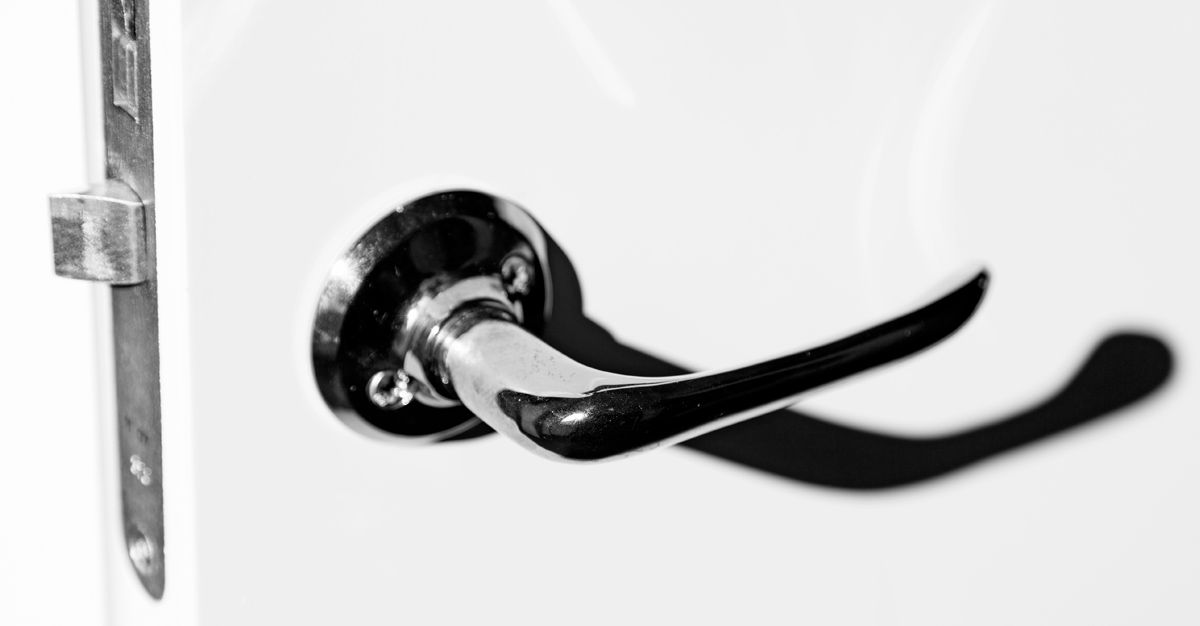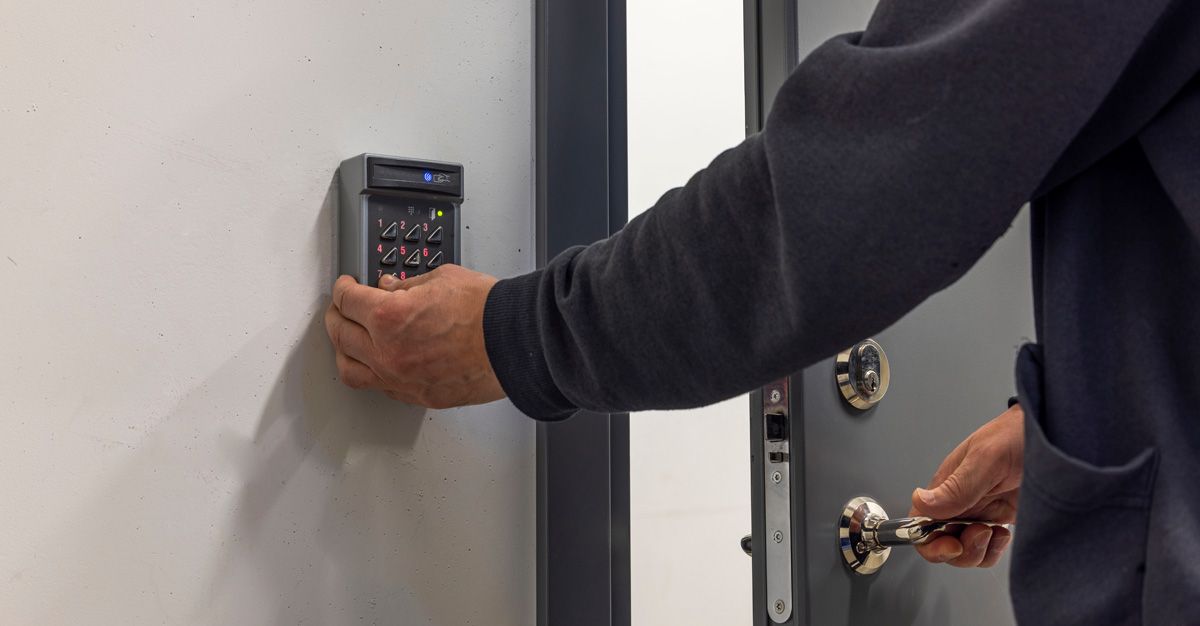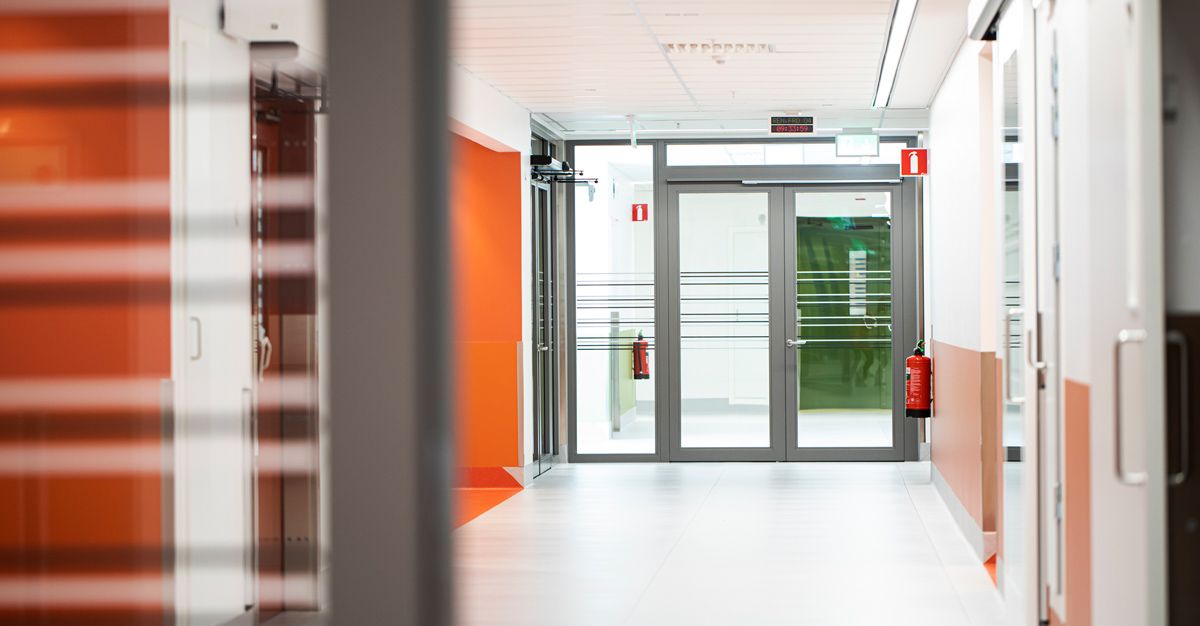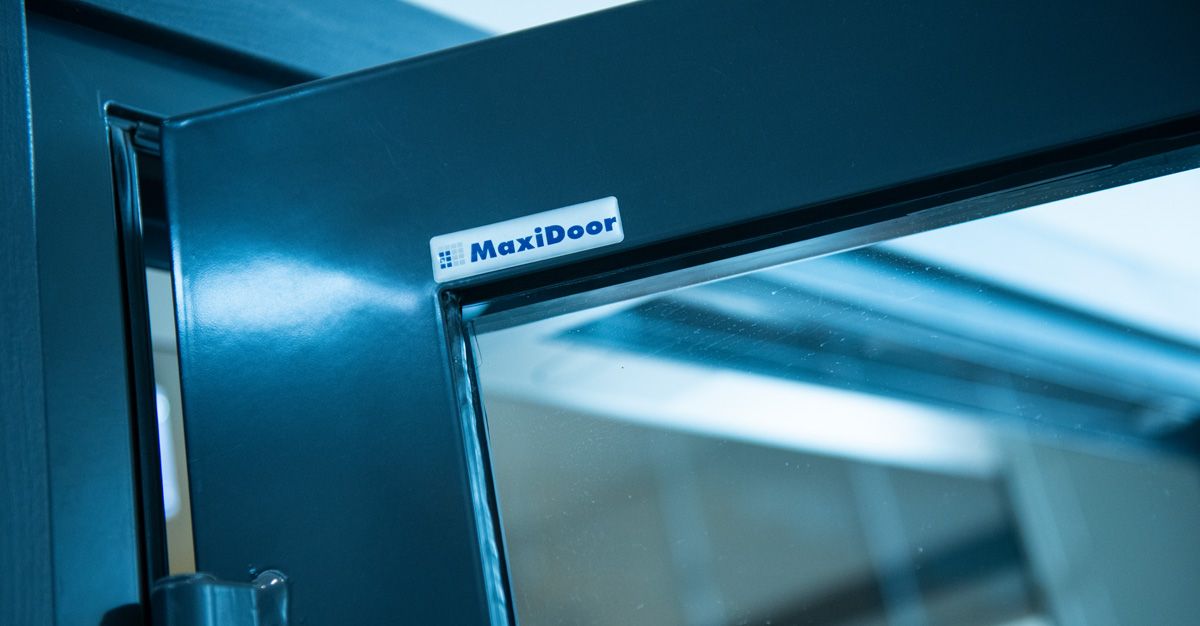Säkerhetsdörrar har prestandakrav
Har du någonsin ställt dig frågan: Vad är en säkerhetsdörr egentligen? De flesta kanske känner igen en säkerhetsdörr utseendemässigt, men kan ha svårt att sätta fingret på vad det faktiskt är för skillnader mellan enklare dörrar och säkerhetsdörrar. På denna sida hjälper vi dig att få klarhet i några av de större skillnaderna som finns. Det som kallas säkerhetsdörr innebär i praktiken inte mer än en extra förstärkt dörr. Men för att få kallas en officiell säkerhetsdörr behöver dörren vara godkänd och testad av ett ackrediterat säkerhetsorgan. Dörren testas där för varierande grader av inbrottsförsök, med olika typer av verktyg. De lägst klassade dörrarna motstår angrepp med enklare verktyg under en kortare tid, medan de högre klassade dörrarna motstår angrepp med tyngre proffsverktyg under längre tid. Målet med testen är att se till att svenska säkerhetsdörrar är inbrottssäkra nog för att fungera när väl faran är framme. De skyddsklasser som finns är RC1 till RC5.
Hur vet jag om jag har en säkerhetsdörr?
Har din dörr någon av dessa skyddsklasser (RC1-RC5) så vet du att du har en kvalitetstestad och typgodkänd säkerhetsdörr. Detta kan du vanligen kolla upp genom att öppna dörren och titta i dörrbladet. Där ska tillverkarens namn, dörrens skyddsklass och brandklass vara utskriven.
Är det lag på att ha en skyddsklassad dörr?
Det enkla svaret är nej. Det blir i stället upp till de enskilda företagen att skyddsklassa sina dörrar via exempelvis SBSC eller RISE. Klassificeringsföretagen behöver förhålla sig till den europeiska säkerhetsstandarden SS-EN 1627 vid klassificering av dörrarna. De flesta företag behöver möta marknadens högt ställda krav på säkerhetsklassning, både utifrån en etisk såväl som en konkurrensmässig synvinkel. Idag ställer fastighetsbolag, byggföretag, myndigheter och företag höga krav på dörrtillverkare. Därav blir en skyddsklassad dörr en standard i branschen. När det gäller lägenheter är RC1 vanligast och när vi pratar om entréer, källarutrymmen, parkeringshus, konferenslokaler och företagsbyggnader är det vanligast med RC2 och RC3.

Skillnad mellan vanlig ytterdörr och en säkerhetsdörr
Säkerhetsdörren är vanligen gjord helt eller delvis i stål och har tjockare dörrblad, karm och låsanordning. I en säkerhetsdörr är också låsanordningen och öppningar i dörren mer dolda och skyddade. Detta skapar en mer kompakt helhet som inte bjuder in till några uppenbara svagheter eller sätt att bryta upp. En av de större skillnaderna är att en säkerhetsdörr alltid är gjord i stål medan en ytterdörr i de flesta fallen är gjort helt eller delvis i trä. En säkerhetsdörr har vanligen en stålförstärkt karm och tröskel, ett brytskydd och en säkerhetsklassad och elektronisk låsanordning. Många säkerhetsdörrar har även två lås. I jämförelse har en vanlig ytterdörr karm och tröskel i trä, den har sällan brytskydd och har enklare mekaniska låsanordningar. Vissa garderar även sin altan- eller balkongdörr som en sorts ytterdörr. Dessa dörrar har i regel ett lägre helhetskydd än en lågt klassad ytterdörr. Men det finns lämpliga förstärkningar som kan göras för att öka skyddet hos en altan- eller balkongdörr. En fönsterdörr låses i de flesta fall genom en spanjolett som kan ha ett icke låsbart eller låsbart låshus. Ett låsbart låshus är det säkrare alternativet och innebär att handtaget går att låsa inifrån. För en ökad säkerhet är det också att föredra sina fönsterdörrar utrustade med en spanjolett som har 3-4 låspunkter och gärna fallkolvar som fäster sig bra i karmen.
Skillnaderna känns kanske obetydliga och en vanlig ytterdörr kan upplevas som robust och stabil. Men skillnaden mellan hur enkelt det är att bryta upp en icke klassad ytterdörr och den lägst klassade säkerhetsdörren är betydande.
Säkerhetsdörrar i trä
Många går säkert i tron att en säkerhetsdörr måste vara stålbeklädd, likt en källardörr. Men så är inte fallet. Företag har under lång tid tillverkat träbeklädda ståldörrar för att möta det ökade säkerhetsbehovet från primärt lägenhetsboende. Dessa dörrar kan beställas från dörrtillverkare, och i många fall kan du ersätta din ytterdörr med en mer estetiskt tilltalande säkerhetsdörr.
Vad kan jag göra själv för att öka min dörrs säkerhet?
Oavsett vilken dörr du har idag finns en rad olika enkla saker du kan göra själv för att förbättra dörrens säkerhet, och därmed försvåra ett potentiellt inbrottsförsök.
-
Montera ett brytskydd
En av de enklaste, bästa och mest prisvärda förbättringarna du kan göra på din dörr, oavsett om det är en vanlig dörr eller en säkerhetsdörr. Ett brytskydd kostar inte mer än några hundra kronor på sin höjd men ger en inbrottstjuv en mycket tuffare utmaning. Det går även att köpa ett brytskydd som går längs hela dörrens höjd. Det medför en svårare montering men blir ännu säkrare än ett vanligt brytskydd, som endast täcker området runt handtaget.
-
Köp ett nytt lås med böjd regel
Har du ett standardlås rekommenderas det att investera i ett lås med en mer rejäl regel. Regeln är en av de dörrkomponenter som står emot längst vid ett inbrott. Är den dessutom mer robust, eller om det finns fler än två, blir ett inbrott svårare att genomföra.
-
Installera ett hänglås eller motsvarande
I det fall tjuven försöker forcera dörren efter att den har öppnats är ett hänglås en billig försäkring för att lyckas stänga dörren.
-
Sätt upp ett regellås
En enkel uppsättning lås som troligen inte gör den största skillnaden om dörren är uppbruten, men kan addera en viss extra säkerhet till helheten. Sett till kostnaden och hur enkelt det är att installera är ett regellås ändå något som är värt att ha i åtanke.
Naturligtvis är det så att det allra bästa sättet att öka säkerheten på din dörr är att öka din dörrs skyddsklass. Du kan få en specialgjord dörr tillverkad utifrån dina behov hos de flesta dörrföretag. Då kan du själv välja färg, handtag och passande låssystem. I många fall finns även möjlighet att köpa till dörrstängare, öppningsknapp, larm, kodlås, brevnedkast och mycket mer.

Vad har en säkerhetsdörr för funktion?
Den ska skydda personer och verksamheter från obehöriga. Den ska också agera avskräckande, på så sätt att om en potentiell inbrottstjuv ser en rejäl inbrottsklassad dörr kan det i många fall räcka för att inbrottet inte ens ska ske. En RC3 eller RC4 kräver ett nästan konstant angrepp under 5–10 minuter, med tunga verktyg som gör mycket oväsen. Detta är inget en tjuv vill utsätta sig för, då risken många gånger är stor att inte lyckas, eller att denne blir påkommen under angreppet på grund av allt oväsen. Därmed fungerar i de allra flesta fallen en säkerhetsdörr och tillhörande anordning som en försäkring på att inbrott inte sker.
En säkerhetsdörr är inte komplett utan ett säkert lås
För samtliga RC-klassade dörrar gäller det att låshusen ska vara godkända enligt standarden SS-EN 12209. Olika krav ställs beroende på vilken klassning som RC-dörren ska uppnå. I många fall är det låset och området runtikring som är den huvudsakliga angreppspunkten för en inbrottstjuv. Det säger ju sig självt att om låset är för svagt spelar det ingen roll hur massiv och svårgenomtränglig resterande del av dörren är. Säkerhetsdörrar byggs i nästan alla fall med färdiga utrymmen för elektroniska lås och extra förstärkningar runt dessa, för att göra dem mycket svåra att komma åt. Elektroniska lås är i sin konstruktion mycket svårare att angripa då låshuset i sig är mycket mer skyddat än vid ett vanligt dörrlås. Dessutom är ett elektroniskt lås, ett elslutbleck eller motorslutbleck, möjligt att koppla till en larmcentral och ett passersystem. Detta skapar extra dimensioner av svårigheter för en tjuv. Vid ett elektroniskt lås kan till exempel nyckelhål uteslutas, vilket gör dörren ännu svårare att bryta upp. Det tar även bort möjligheten att göra inbrott genom att faktiskt lyckas komma över en nyckel.

Säkerheten sitter i helhetslösningen
Den stora skillnaden med en säkerhetsdörr jämfört med en vanlig dörr är dock möjligheten till en dygnet-runt-koppling till kamera och larmcentral, som vid minsta lilla försök till angrepp aktiveras och skickar ut polis eller väktare till platsen. Sätt då i perspektiv att de flesta säkerhetsdörrar kräver angrepp via proffsverktyg från erfarna inbrottstjuvar i upp till 10 minuter, ibland mer. Detta skapar en mycket säker helhetslösning som avskräcker de flesta inbrottstjuvar.
En säkerhetsdörr är brandsäker
Både ytterdörrar och säkerhetsdörrar ska i regel vara brandsäkra enligt EI30 och brandgastäta enligt S200. Dock är det bara lagkrav på att alla nyinstallerade dörrar mot trapphus ska vara både brandklassade och brandgastäta. Gällande övriga dörrar i en byggnad är det upp till fastighetsägaren eller byggherren att följa gällande säkerhets- och brandskyddsriktlinjer.
I Sverige finns det alltså lagar som säger att entrédörrar i lägenheter måste skydda mot brand i minst 30 minuter, oavsett om det är nya lägenheter eller dörrar som byts ut i befintliga flerbostadshus. Boverket har specificerat detta i de byggregler, BBR avsnitt 5:534, som trädde i kraft den 1 januari 2013. Säkerhetsdörrar till lägenheter måste därför ha en brandklassning på minst EI30, vilket betyder att dörren uppfyller kraven för integritet (E) och isolering (I) under 30 minuter.
Det är givetvis också möjligt att beställa dörrar med en högre brandklassning, såsom EI60/A60. I Sverige används vanligtvis dörrar som förhindrar brandspridning i 30, 60 eller 120 minuter, vilket är angivet i deras brandklassning, som EI30 och A60. Kraven innebär att dörrarna ska hindra sticklågor från att läcka ut genom dörren i en grad som skulle kunna orsaka en brand, samt att de inte får överskrida en viss temperatur under en given tid.
Ljudisolering
En säkerhetsdörr skyddar mot buller och oväsen, vilket skapar en mer trivsam miljö, oavsett om det handlar om en säkerhetsdörr för ett hem eller en offentlig byggnad. I Sverige är ljudklass 35 dB den vanligaste ljudisoleringen för säkerhetsdörrar, medan ljudklass 40 dB och 45 dB främst används i miljöer där högre ljudkrav ställs, som myndigheter, anstalter och verksamheter med hög sekretess.
Ljudklasser används för att beskriva hur väl en dörr eller vägg isolerar ljud. Ju högre ljudklass, desto bättre isolering mot ljud. Ljudklass 25 dB innebär exempelvis att samtal vid normal nivå kan höras och förstås på andra sidan dörren eller väggen, medan ljudklass 50 dB innebär att samtal, rop och skrik inte längre uppfattas av det mänskliga örat.
I ljudklass 30 dB kan samtal vid normal nivå höras svagt och kan avlyssnas. Samtal vid normal nivå inte kan förstås i ljudklass 35 dB, men kan avlyssnas till viss del vid förhöjd ljudnivå. I ljudklass 40 dB kan samtal inte avlyssnas, men rop och skrik hörs svagt. I ljudklass 45 dB kan samtal inte avlyssnas och rop och skrik hörs inte längre alls.





